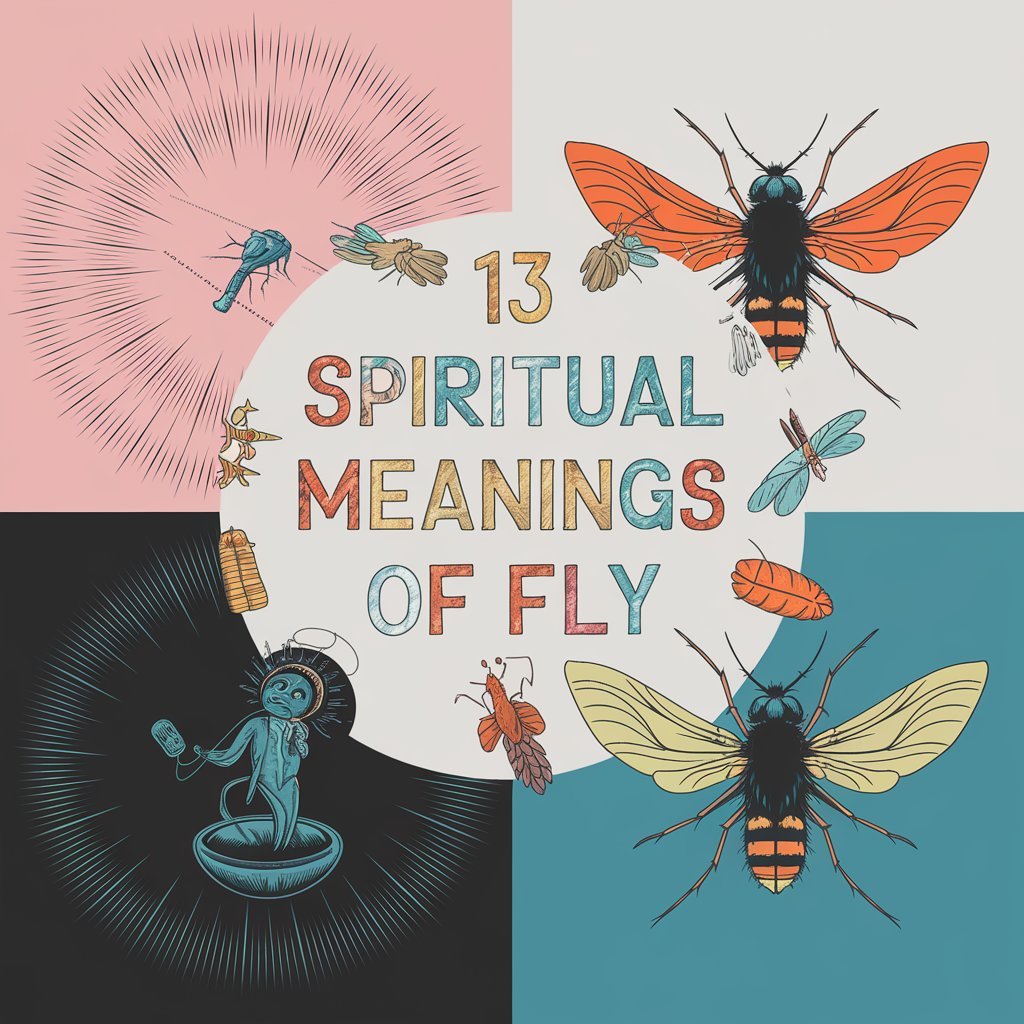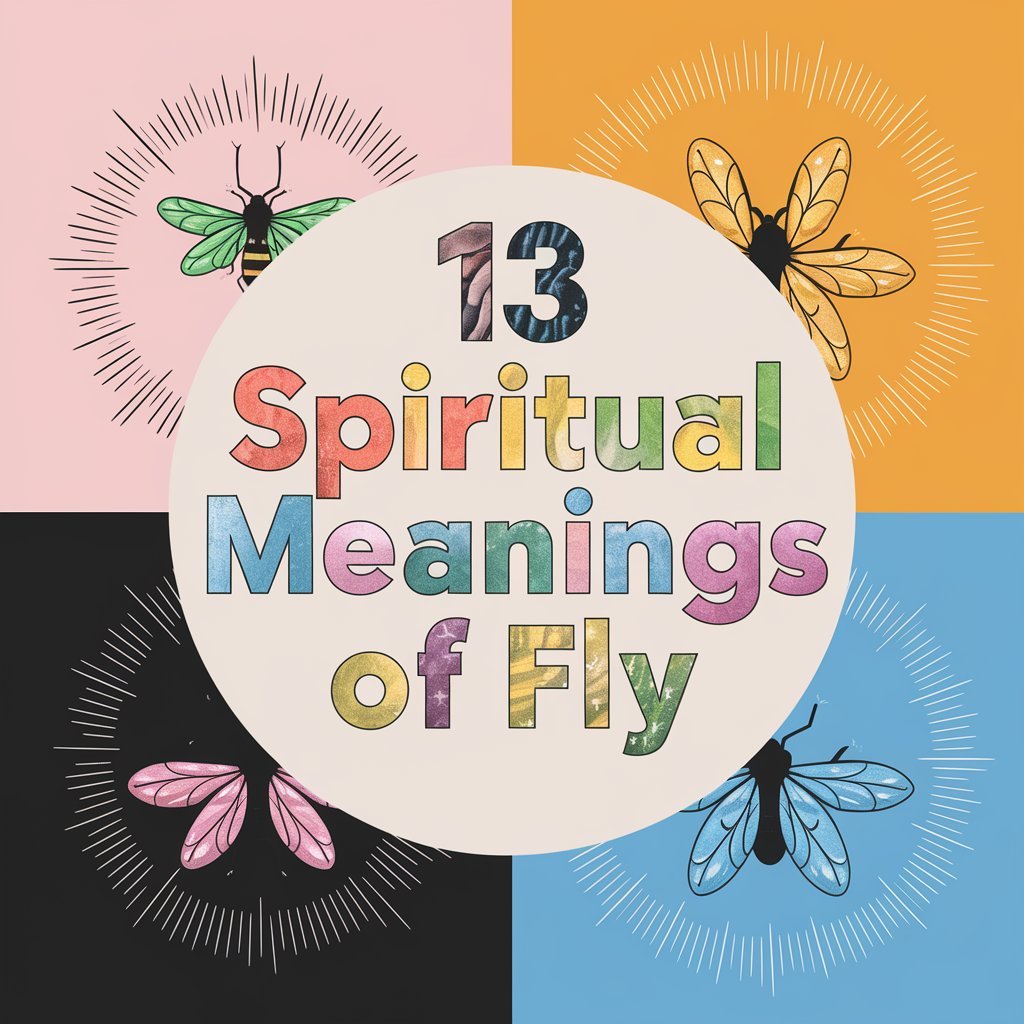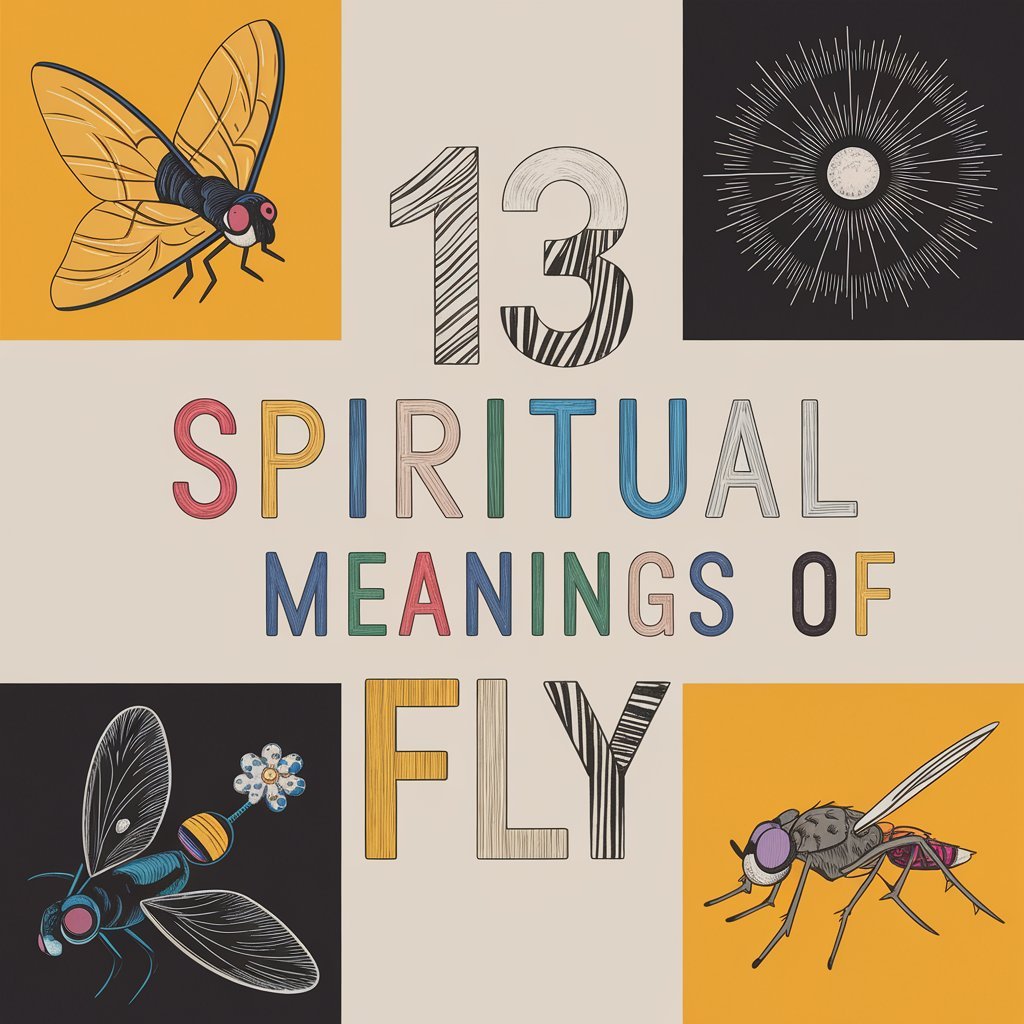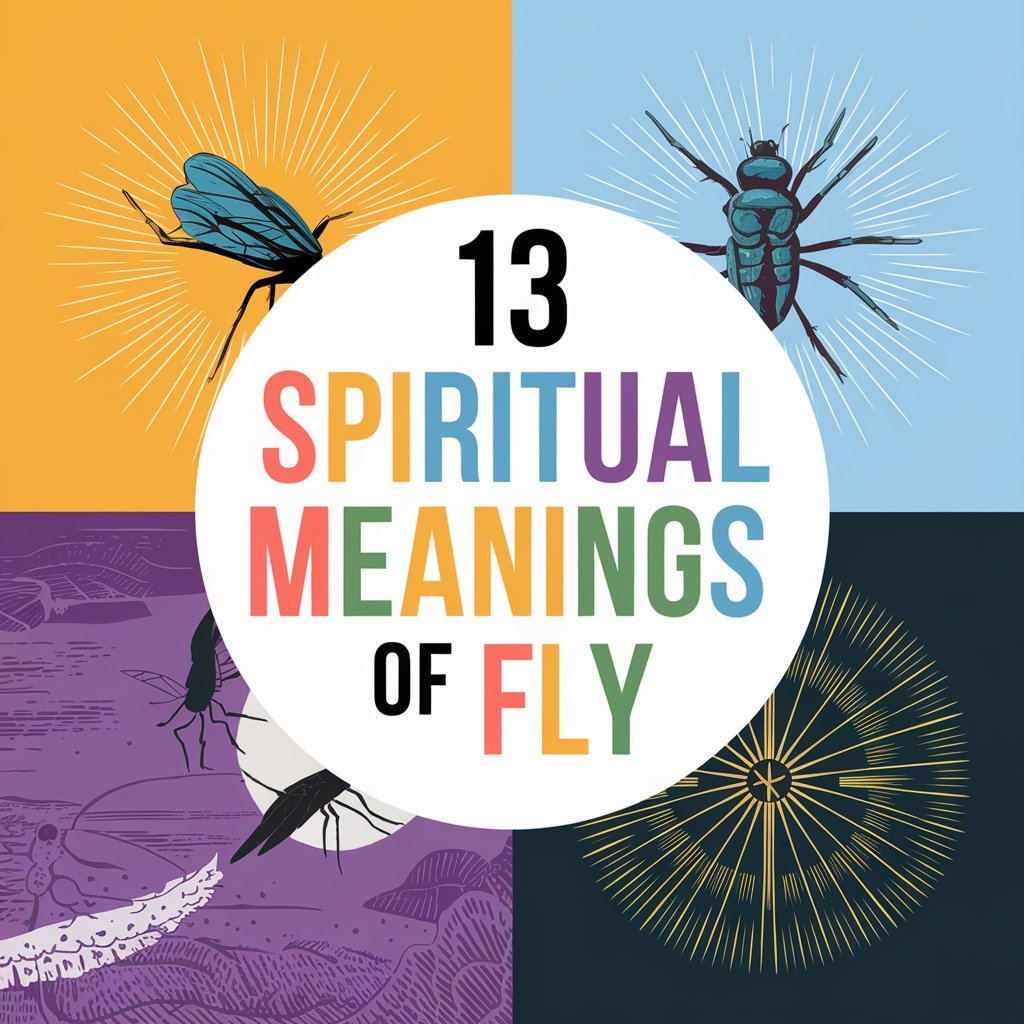13 Spiritual Meanings of Fly: Deciphering the Spiritual Secret
As you explore the spiritual meaning of flies, you’ll uncover a rich tapestry of symbolism and significance. In ancient cultures, flies were revered as messengers of the gods, embodying transformation, rebirth, and resilience. Their remarkable adaptability and ability to thrive in diverse environments make them powerful symbols of personal growth and spiritual awakening.
With their unique ability to regenerate lost body parts, flies remind us of the cyclical nature of life and death, and the potential for inner healing and regeneration. As you continue to examine the fly’s buzzing presence, you’ll uncover more subtle truths about its symbolic language and the whispers it shares with you.
In a Nutshell
- Flies symbolize transformation, rebirth, and perseverance, mirroring the human experience of shedding old patterns and emerging anew.
- As sacred messengers, flies convey omens and divine messages, guiding human decision-making and behavior in ancient cultures.
- Flies embody adaptability and resilience, thriving in diverse environments and encouraging flexibility in the face of change.
- The fly’s presence can catalyze personal growth and spiritual awakening, requiring subtlety and nuance in interpretation.
- The fly’s symbolic meaning is unique to each individual, influenced by cultural, historical, and personal associations and experiences.
Flies in Ancient Cultures

Across various ancient cultures, flies were imbued with symbolic meanings that transcended their physical presence.
You’ll find that these tiny creatures were considered more than just pesky insects; they held significant importance in the spiritual domain. In many ancient societies, flies were seen as Ancient Omens, carrying messages from the divine or supernatural spheres.
They were believed to possess mystical powers, often associated with fertility, abundance, and regeneration.
As Sacred Pests, flies were tolerated, even revered, for their ability to thrive in environments where other creatures couldn’t.
Their resilience and adaptability earned them a place in ancient mythologies and folklore. In some cultures, flies were considered harbingers of good fortune or prosperity, while in others, they were seen as messengers of the gods.
By examining the symbolism surrounding flies in ancient cultures, you’ll gain insight into the complex and multifaceted nature of these tiny creatures.
Their significance extends beyond their physical presence, revealing a deeper understanding of the human experience and our connection to the natural world.
Symbolism of Transformation

Your journey into the symbolic domain of flies continues with the concept of transformation.
Flies have long been associated with change, and their life cycle is a powerful metaphor for spiritual rebirth and inner renewal.
As you explore deeper into the symbolism of transformation, you’ll discover that flies embody the cyclical nature of growth and decay.
Some key aspects of fly symbolism related to transformation include:
- Metamorphosis: Flies undergo a dramatic transformation from egg to larva to adult, mirroring the spiritual journey of shedding old patterns and emerging anew.
- Life and death: Flies are drawn to decay and rot, yet they also represent the cycle of life and rebirth, reminding you that endings often pave the way for new beginnings.
- Adaptation: Flies are highly adaptable, thriving in diverse environments, and encouraging you to embrace flexibility and resilience in your own transformation.
- Regeneration: Flies can regenerate lost body parts, symbolizing the potential for inner healing and regeneration in your own life.
As you reflect on these symbols, consider how the fly’s transformative power can inspire and guide your own journey of spiritual growth and renewal.
Messengers of the Gods
Three ancient cultures – the Egyptians, Greeks, and Norse – revered flies as messengers of the gods, associating them with divine communication and omens.
You may find it intriguing that these civilizations recognized the fly’s ability to convey sacred messages from the divine dominion. In their eyes, flies were divine messengers, carrying omens that guided human decision-making and behavior.
As you explore the symbolism of flies as messengers, you’ll discover that they’re often linked to the gods of the underworld, chaos, and transformation.
This connection underscores the fly’s role in facilitating communication between the mortal and divine spheres. In this capacity, flies were seen as sacred omens, warning of impending change or signaling the need for transformation.
Guides to the Afterlife
In ancient mythologies, flies were believed to escort the deceased through the afterlife, serving as psychopomps that guided the spirits of the dead to their final resting places.
As you venture into the spiritual domain, you may find that flies are more than just pesky insects – they’re soul escorts, tasked with charting the afterlife.
In many cultures, flies are seen as afterlife pilots, responsible for ensuring the deceased reach their intended destination.
As you explore the symbolism of flies, consider the following aspects:
- Guiding the Departed: Flies are often associated with the afterlife, guiding the spirits of the dead through the territories of the unknown.
- Soul Escorts: In some mythologies, flies are believed to escort the souls of the deceased to their final resting places, ensuring a safe passage.
- Charting the Afterlife: Flies are seen as pilots of the afterlife, helping the deceased chart the complexities of the spiritual domain.
- Psychopomps: As psychopomps, flies serve as guides, ferrying the spirits of the dead to their ultimate destinations.
Cycle of Life and Death
Many cultures believe that flies embody the cycle of life and death, as they thrive in environments where decay and rebirth coexist.
You may find it intriguing that flies can teach you about embracing life’s patterns. Their life cycle, which spans mere weeks, mirrors the human experience of birth, growth, decay, and rebirth.
Flies’ ability to adapt to diverse environments and exploit available resources serves as a reminder to appreciate the fleeting nature of life.
In their death rites, flies demonstrate a remarkable acceptance of mortality.
As they succumb to natural predators or environmental factors, they become a source of sustenance for other organisms. This cycle of life and death is a poignant reminder of the interconnectedness of all living beings.
By observing flies, you can gain a deeper understanding of the impermanence of life and the importance of living in harmony with nature.
As you reflect on the fly’s life patterns and death rites, you may find yourself more at peace with the natural order of things, and more mindful of your own place within the grand tapestry of life.
The Power of Adaptation

Frequently, flies exhibit an extraordinary capacity to adapt to diverse environments, thriving in conditions that would be hostile to other organisms.
This flexibility is a badge of honor to their remarkable survival strategies, allowing them to flourish in a wide range of ecosystems.
As you explore the world of flies, you’ll discover that their environmental resilience is rooted in their ability to adjust to changing circumstances.
Some key aspects of their adaptability include:
- Rapid breeding: Flies can produce multiple generations in a short span, enabling them to quickly adapt to new environments and exploit available resources.
- Metabolic flexibility: Flies can survive on a wide range of food sources, from sweet nectar to decaying matter, making them highly versatile in their nutritional requirements.
- Behavioral adaptability: Flies can modify their behavior to respond to changing environmental conditions, such as altering their activity patterns to avoid predators or extreme temperatures.
- Physiological resilience: Flies possess a range of physiological adaptations, including resistance to desiccation and extreme temperatures, allowing them to thrive in challenging environments.
Wisdom in Small Packages
Harnessing the fly’s extraordinary adaptability, you can tap into the wisdom hidden within these tiny creatures.
As you plunge deeper into their world, you’ll discover that flies embody the essence of humility, serving as humble teachers that guide you towards self-reflection and growth.
These sacred messengers remind you that even the smallest among us can possess profound wisdom.
Their ability to thrive in diverse environments and adapt to new situations is an attestation to their resilience and resourcefulness.
By embracing the fly’s adaptability, you can cultivate a similar mindset, becoming more open to change and better equipped to navigate life’s challenges.
Furthermore, the fly’s diminutive size belies its remarkable capabilities, teaching you to look beyond surface-level appearances and appreciate the untapped potential within yourself and others.
As you continue to explore the fly’s symbolic significance, remember that wisdom often lies in the most unexpected places.
Deciphering the Fly’s Message
As you plunge deeper into the symbolic domain of the fly, deciphering its message becomes an exercise in subtlety, requiring you to tune into the nuances of its behavior and appearance.
The fly’s presence in your life can be a catalyst for personal growth and spiritual awakening, but only if you’re willing to listen to its subtle whispers.
To tap into the fly’s symbolic language, consider the following aspects:
- Personal symbolism: What does the fly represent to you? Is it a symbol of transformation, rebirth, or perseverance? Reflect on your personal associations with the fly to uncover its unique message for you.
- Appearance: Observe the fly’s physical characteristics, such as its color, shape, and size. Do these traits resonate with your current circumstances or emotional state?
- Behavior: Note the fly’s actions and movements. Is it hovering around a specific area, or is it darting between different spaces? This behavior can symbolize your own patterns and habits.
- Context: Consider the environment and situation in which you encountered the fly. Is it in a place of chaos or serenity? This context can influence the fly’s message and its relevance to your life.
The Fly as a Trickster
The fly, often viewed as a nuisance or pest, holds a significant place in various cultures and mythologies as a trickster figure, embodying cunning, adaptability, and transformation. In many indigenous cultures, the fly is seen as a shape-shifter, able to navigate between different realms and dimensions, often serving as a messenger between the physical and spiritual worlds.
In some African cultures, the fly is associated with the trickster god Anansi, who uses his cunning and wit to outsmart his enemies and achieve his goals. Similarly, in ancient Greek mythology, the fly is linked to the god Hermes, who is often depicted with wings, symbolizing his swiftness and agility.
The fly’s ability to transform from a crawling larva to a flying adult, undergoing a dramatic metamorphosis, has also led to its association with themes of transformation and renewal. In this sense, the fly can be seen as a symbol of personal growth and transformation, reminding us that we too can undergo significant changes and emerge anew, just like the fly emerging from its cocoon.
Furthermore, the fly’s reputation for being a pest, constantly buzzing around and landing on unwanted surfaces, can also be seen as a manifestation of its trickster nature, always pushing boundaries and testing limits, forcing us to re-evaluate our assumptions and challenge our status quo.
By embracing the fly as a trickster figure, we can tap into its transformative power and learn to navigate the complexities of our own lives with greater agility and cunning.
The Fly’s Association with the Elements
The fly’s connection to the elements is a multifaceted one, reflecting its adaptability and resilience in various environments. In many cultures, the fly is associated with the element of air, symbolizing its ability to navigate and thrive in the realm of the skies.
The fly’s wings, which beat at an incredible rate of up to 200 times per second, allow it to defy gravity and soar through the air with ease, making it a potent symbol of the element of air. This association is also reflected in the fly’s role as a messenger and trickster, often carrying information and secrets between different realms and dimensions.
The fly’s connection to the element of earth is also significant, as it is often found in close proximity to decaying matter and waste. In this sense, the fly can be seen as a symbol of transformation and renewal, breaking down organic matter and recycling nutrients back into the earth. This process is essential for the health and fertility of the soil, highlighting the fly’s role as a guardian of the earth and a facilitator of ecological balance.
The fly’s association with the element of water is also noteworthy, as many species of flies are found near aquatic environments, such as ponds, lakes, and rivers. The fly’s ability to lay eggs in water and for its larvae to thrive in aquatic environments has led to its association with the element of water, symbolizing its connection to the cycles of life and death. In some cultures, the fly is seen as a symbol of the soul, navigating the waters of the afterlife and guiding the deceased to the afterworld.
Finally, the fly’s connection to the element of fire is often overlooked, but it is a significant one. In some cultures, the fly is associated with the sun and the fiery energies of transformation, symbolizing its ability to ignite change and spark new life. The fly’s attraction to warmth and light, often found near fires and other sources of heat, reflects its connection to the element of fire, highlighting its role as a catalyst for transformation and growth.
The Connection to the Ancestors
In many indigenous cultures, the fly is believed to serve as a messenger between the living and the dead, carrying prayers and messages to the ancestors. This connection to the ancestors is rooted in the fly’s ability to navigate between different realms and dimensions, often seen as a bridge between the physical and spiritual worlds. In some African cultures, the fly is believed to carry the spirits of the deceased to the afterlife, guiding them on their journey and ensuring their safe passage.
The fly’s connection to the ancestors is also reflected in its role as a symbol of remembrance and commemoration. In some cultures, the fly is seen as a reminder of the ancestors who have passed on, its presence serving as a connection to the past and a reminder of the importance of honoring one’s heritage.
Purification and Cleansing
In many cultures, the fly is associated with purification and cleansing, reflecting its role in breaking down and transforming organic matter. In some indigenous traditions, the fly is seen as a symbol of purification, its presence believed to cleanse and purify the body, mind, and spirit. This association is rooted in the fly’s ability to consume and break down decaying matter, recycling nutrients back into the earth and promoting ecological balance.
The fly’s connection to purification and cleansing is also reflected in its role in traditional medicine. In some cultures, the fly is used in rituals and ceremonies to purify and cleanse the body of negative energies and toxins. For example, in some African cultures, the fly is believed to have healing properties, its larvae used to treat wounds and infections.
Frequently Asked Questions
Are Flies Attracted to Spiritual People or Sacred Spaces?
You wonder if flies are drawn to spiritual people or sacred spaces. Research suggests that flies are attracted to the sacred aura and spiritual frequency you emit, which may be perceived as a unique energy signature.
Can Flies Be a Sign of Good Luck or Prosperity?
You explore the notion that flies symbolize good fortune or prosperity, tracing it back to ancient myths and cultural significance, where they’re associated with rebirth, transformation, and abundance, hinting that their presence may indeed be a positive omen.
How Do I Interpret a Fly’s Presence in My Dreams?
When you dream of a fly, you’re receiving a message from your subconscious symbol, suggesting you’re neglecting or overlooking something in your waking life; take note, as this dream messenger is urging you to acknowledge and address the issue.
Are Flies Associated With Any Specific Zodiac Signs or Astrology?
You’ll discover that fly symbolism is linked to Scorpio and Pluto, revealing a cosmic connection to transformation, rebirth, and intense passion, as these insects embody the darker, mysterious aspects of the zodiac.
Can Flies Be Used for Divination or Spell-Casting Practices?
You explore the domain of mystic omens, discovering that, yes, flies have been used in ancient rituals for divination and spell-casting practices, where their erratic flight patterns and symbolic meanings are interpreted to guide your decisions and manifest desires.
Conclusion
You’ve unraveled the mystique surrounding flies, delving into their symbolism across ancient cultures. Transformation, divine messengers, and afterlife guides are just a few aspects of their multifaceted significance. The fly’s remarkable adaptability and compact wisdom offer valuable life lessons. By examining the fly’s role in the cycle of life and death, you’ve gained a deeper understanding of their symbolic importance. Now, decipher the fly’s message and integrate its wisdom into your life.

Liza Stockholm is an esteemed spiritual guide and the visionary behind Spiritual with Liza. With a profound passion for empowering others on their spiritual journey, Liza offers a blend of educational content and personal guidance. Her expertise in spirituality is rooted in years of dedicated practice and study, making her a trusted companion for those seeking enlightenment and inner peace.












